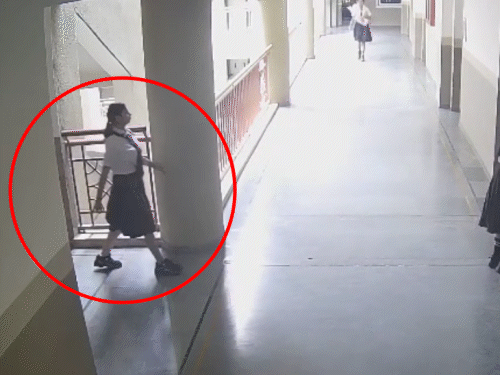Crime and Politics Collide: Trump Spotlights Urban Violence Amid Data Showing Declines but Persistent Mass Shooting Fears
President Trump highlights rising concerns over urban crime, while critics point to long-term declines in violent crime but warn of persistent mass shooting risks in Washington, D.C.

Washington, D.C. – August 19, 2025 – Crime has re-emerged as a central flashpoint in American politics, with President Donald Trump amplifying concerns about urban violence, even as national crime statistics point to broader declines. The debate is becoming increasingly heated as the nation grapples with contrasting realities: overall decreases in violent crime, yet a continuing threat of mass shootings and concentrated spikes in cities such as Washington, D.C.
Trump’s Message on Urban Crime
In recent speeches, President Trump has repeatedly drawn attention to what he describes as “out-of-control urban crime,” citing incidents in Washington, Chicago, and Philadelphia. He has called for stronger policing measures, increased funding for federal task forces, and tougher sentencing for repeat offenders.
During a rally earlier this month, Trump stated:
“Our cities cannot thrive if people are afraid to walk the streets at night. We must restore law and order, and we will do it.”
Supporters argue that his emphasis reflects the lived experiences of communities hit hardest by violence, where neighborhood shootings and organized crime continue to take lives despite national trends showing improvements.
The Numbers Tell a More Complex Story
Data from the FBI’s Uniform Crime Reporting Program and independent researchers shows that violent crime rates in the United States have declined steadily since the 1990s, and even recent surges tied to the COVID-19 pandemic are beginning to stabilize. For example, several major cities have reported double-digit declines in homicides since 2023.
Yet, mass shootings remain a persistent and unpredictable threat. According to the Gun Violence Archive, the United States continues to average more than one mass shooting per day in 2025, a figure that undermines the perception of safety even in areas where overall crime is falling.
In Washington, D.C., homicides dipped slightly in 2024, but gun-related incidents, including mass shootings, remain a pressing concern. Residents in neighborhoods like Anacostia and Petworth still face the reality of community-level gun violence that statistics alone cannot fully capture.
Political Divide Over Crime
Critics of Trump’s approach argue that framing urban America as a hotbed of violence ignores the long-term progress made in reducing crime. They accuse him of politicizing fear to advance a “law-and-order” agenda while sidestepping root causes such as poverty, inequality, and access to firearms.
Democratic leaders in Congress have emphasized community-based solutions, including funding for youth programs, mental health resources, and stricter gun safety measures. They point to the success of targeted intervention programs in cities like Boston and Newark as evidence that investment in prevention can yield sustainable results.
Meanwhile, Republicans continue to press for policies centered on aggressive policing and harsher penalties, arguing that lenient laws contribute to recurring cycles of violence.
Washington, D.C. as a Focal Point
The nation’s capital has increasingly become a symbolic backdrop for the broader debate. High-profile incidents, including a mass shooting outside a popular nightlife area earlier this summer, have drawn national headlines. While the city has made progress in lowering property crimes and robberies, gun-related homicides and public shootings keep fueling anxiety among residents.
Local officials are walking a fine line between addressing public safety concerns and resisting federal overreach. Mayor Muriel Bowser has called for expanded cooperation with federal agencies but also warned against political narratives that stigmatize Washington’s communities.
Balancing Fear and Reality
Public perception of crime often diverges from the data. Polls consistently show that a majority of Americans believe crime is rising, even when statistics indicate otherwise. Experts attribute this gap to the visibility of violent incidents on social media, extensive news coverage of mass shootings, and political rhetoric that amplifies fear.
Dr. Karen Holt, a criminologist at Georgetown University, explains:
“When people hear about mass shootings or violent crime in the nation’s capital, it resonates far more than abstract national statistics. The political battle is less about the numbers and more about how those numbers are framed.”
What Comes Next
As the 2026 midterm elections approach, crime is expected to remain a potent campaign issue. Trump’s message is likely to energize his base, while Democrats will continue highlighting long-term declines and advocating for gun reform.
For residents in cities like Washington, D.C., the debate remains personal. While many appreciate declining trends, the persistence of public shootings leaves them skeptical of claims that urban areas are becoming safer.
The balance between perception and reality — between political rhetoric and lived experience — will shape not only the national conversation on crime but also the policies that emerge in the coming months.
What's Your Reaction?
 Like
0
Like
0
 Dislike
0
Dislike
0
 Love
0
Love
0
 Funny
0
Funny
0
 Angry
0
Angry
0
 Sad
0
Sad
0
 Wow
0
Wow
0







































































